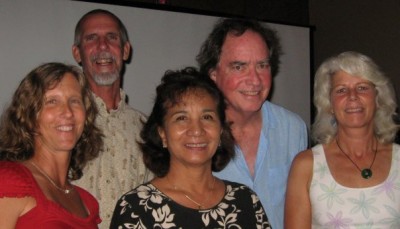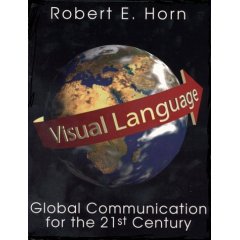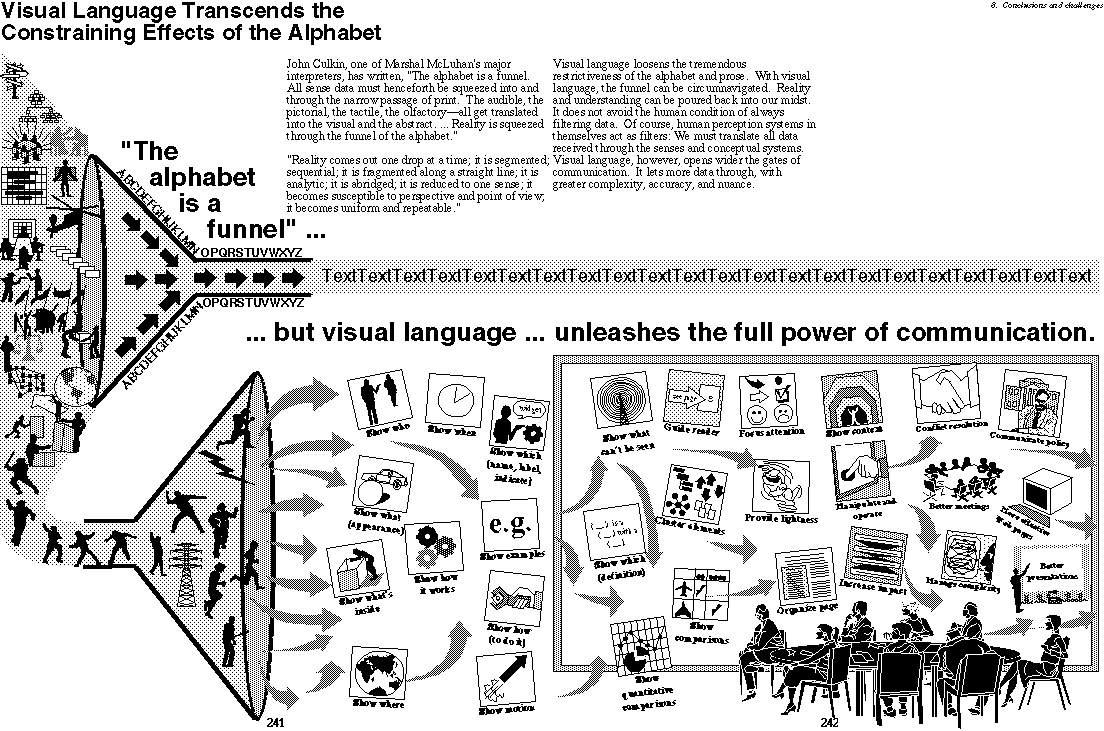I was one of 5 presenters at the latest Elephant Egg event on Oct. 22. This was the best one yet, in my opinion. None of the presenters used bullet points, or read us their slides! In fact, all used the medium in the way recent research says is most effective: the visual content on the slide and the presenters’ spoken comments complement and support each other.
Barking
“Dr. Kate” Kathleen Ireland, a science teacher at Seabury school, shared her experience of the trip of a lifetime, going to the Galapagos Islands with other teachers. She told us how excited she was when her application was accepted: she felt like Charlie, in Charlie and the Chocolate Factory, winning the golden ticket. She told us that all the animals, and even the people, bark, and used that as a metaphor for getting people’s attention to recycling and other ecological concerns.
Uncovering Pa`u
Linda Lindsay gave a graceful and dignified presentation about her current film project, a documentary about the pa`u riders – Hawaiian women who ride horses – and their traditions, a piece of Hawaiian culture that few are aware of. You can follow her work by becoming a fan of her Facebook page.
Visual Language
(Click to view a video of my presentation on YouTube. I’m mostly a silhouette in the shadows, but the presentation and audio are pretty clear.)
My presentation had an audacious goal: to teach the audience a new language! I provided a worksheet to make it an active learning experience and was pleased to see almost everyone participating. Having a table full of friends to support me made it so much easier to make my first public presentation – thanks for being there for me, Jeff, Jeff, Francine, Ann, and Don! And thanks to Gabe, who couldn’t be there, but suggested doing the video.
Here’s the presentation on Slideshare, if you’d like to review it or read through at your own pace.
Wander
Paul Wood, a writer and educator, did a multi-media performance piece accompanied by music by Duke Ellington, commenting poignantly on a current issue, the diversion and restoration of Maui stream water.
Maui forest birds
Mike Neal came to Maui years ago to surf, but has recently discovered a new passion in the cloud forests on the slopes above us, photographing and working to preserve native birds of Maui. These birds are extremely rare, with only a few hundred individuals (of some species) surviving in the world.

The presenters, from left to right: Kathleen Ireland, Mike Neal, Linda Lindsay, Paul Wood, Karen Bennett.
Thanks again to Maggie Sutrov and Ian Blakeslee for organizing this evening of inspiration! They are planning another event next month which promises to be fascinating: The Reverse Origami Film Festival, which will feature short (5 minutes or less) videos by Maui film makers, on Nov. 21.



